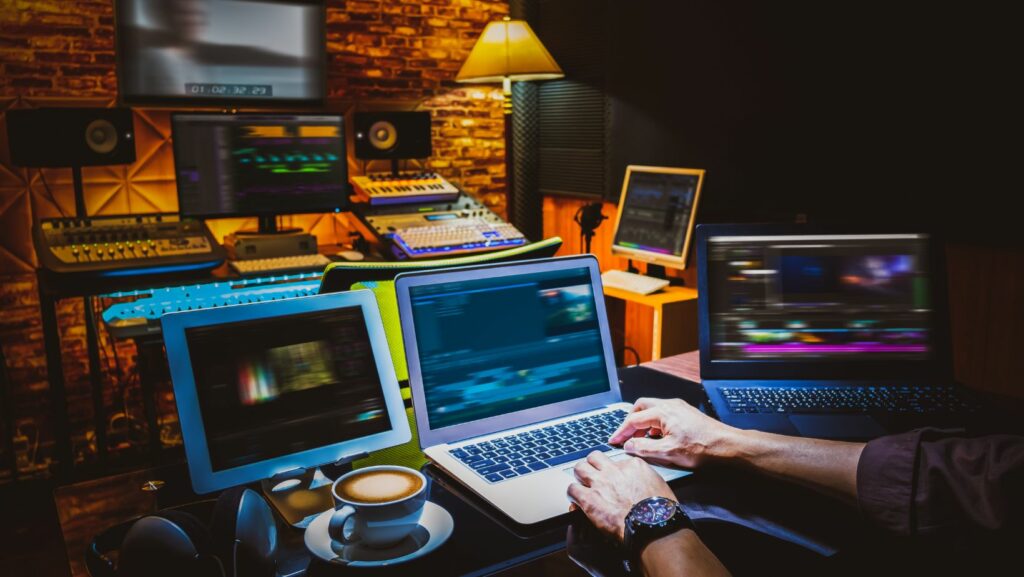In contrast, movie trailers are part of a full marketing strategy for films and serve to attract audiences and create excitement when a film is released. Historically, they have been edited and composed by professional editors focusing on carefully choosing key scenes, increasing dramatic tension, and synchronizing video with music into an immersive experience. Artificial intelligence in video production, however, has brought a new entrant into the realm of AI-generated trailers.
With the vast and powerful ability of AI to analyze data, spot patterns in successful trailers, and create appealing edits all automatically, the question lingers: can AI do better than a human editor? This article looks into the differences between AI-generated and human-crafted trailers. Whether AI is the future of movie marketing will be determined by its efficiency in grabbing audience interest.
The Traditional Art of Movie Trailer Editing
Movie trailers have been produced for decades with the creative intuition and storytelling ability of professional editors. This involves the following process:
- Choosing Important Scenes – The editor selects those scenes that will best grip the audience, create visual impact, or evoke emotion.
- Pacing and Rhythm – The pace at which the trailer unfolds is carefully planned, often in a three-part structure: setup, build-up to climax.
- Music and Sound Design – Audio elements, consisting of dramatic scores, sound effects, and voiceovers, serve to heighten the emotional resonance.
- Audience Psychology – Editors know how to create interest without revealing too much, keeping the audience interested in watching the rest of the movie.
This human process allows true and deep understanding and puts across genre conventions, audience expectations, and cultural nuance. The finest trailers sometimes feel like art in themselves, more memorable than some movies they’re supposed to promote.
How AI is Revolutionizing Movie Trailer-Making
Now, AI-driven tools are entering the trailer editing world, automating the process with advanced algorithms and machine learning. An AI-powered movie trailer maker can analyze the content of the film, identify high-energy sequences, and assemble a trailer based on pre-defined parameters.
Key Capabilities of AI-Generated Trailers:
- Automated Scene Selection – AI identifies the most visually dynamic or narratively significant moments, eliminating the need for manual selection.
- Emotion Detection – With deep learning, AI can track the facial expressions of actors and their dialogue and point out which scenes are carrying the most emotional weight.
- Optimized Pacing – AI optimizes the trailer’s speed and flow to resemble the trends followed by successful trailers in the same genre.
- AI-Generated Voiceovers and Music – Some tools even create background scores and narrations, almost mimicking the tone of a professional voice artist.
A video creator app can help content creators and marketing teams produce high-quality trailers in minutes, saving them from the time-consuming manual editing process. These tools are particularly useful for independent filmmakers or digital marketers who may not have access to large-scale production teams.
Comparing AI-Generated Trailers vs. Human-Made Trailers
The real test lies in comparing AI-generated trailers with those made by human editors. While AI offers speed, efficiency, and consistency, human editors bring creativity, storytelling depth, and an emotional connection that AI still struggles to replicate.

Efficiency and Speed
AI-powered trailer makers can produce a very convincing preview in a matter of minutes, while it takes weeks or even months for human editors to perfect a trailer. This advantage is particularly useful for studios that manage multiple film releases or digital platforms that require promotional content to be produced quickly.
Creativity and Emotional Impact
Where AI can collate data into an aesthetically pleasing trailer, human editors natively bring together tension and suspense, not to mention emotive appeal. Human-made trailers tend to hide their most pertinent elements to maintain viewers’ suspense. AI systems fail to contextualize the meaning of subtext since it does not intuitively grasp the story’s meaning in an organic sense.
Versatility and Sense of Context
AI is trained on existing datasets, so it follows patterns that have been successful in trailers. However, this can lead to formulaic content that is unoriginal. On the other hand, human editors can take creative risks, such as using unconventional sound design or experimental cuts, to craft unique and memorable trailers.
Audience Engagement and Marketing Impact
A well-edited trailer is supposed to connect with its target audience on an emotional level. Human editors consider audience psychology, cultural references, and real-world trends when structuring a trailer. AI may analyze data from previous trailers but cannot interpret cultural shifts or nuanced audience reactions effectively.
The Future of AI in Movie Trailers
Indeed, AI-powered video production tools continue to advance considerably, but AI will not soon replace human movie trailer editors fully. Not, at least not in the next few years, but AI may complement human film editing expertise.

For example, an AI video generator app will finish the first cut of a trailer, where it can join the salient scenes together add transitions, and track the music. Then, a human editor will refine the trailer, bringing creativity, emotional depth, and storytelling expertise to make sure the trailer is engaging for the audience.
Where AI Delivers:
- Roboticizes repeated tasks (e.g., choosing which scenes to use, auto-generating subtitles, and elementary edits)
- Generates alternative trailers for A/B testing in a marketing campaign
- Generating rapid promotional content for digital media and social networks
Where Human Creativity Remains Unsubstituted:
- Unique storytelling approach based on a target audience
- Adding emotional value with nuanced edit decisions
- Going against the norms of trailer formats to produce something that goes viral or stands out
Conclusion: The Ideal of Both Worlds
Undeniably, the evolution of AI in video editing is moving forward, and its role in creating engaging movie trailers is increasing. However, AI should not be seen as a replacement for human creativity but rather as an add-on to it. Where AI-generated trailers are efficient and scalable, the human editor will add the artistic touch that transforms a good trailer into an unforgettable one.
For filmmakers and marketers looking to exploit AI in creating trailers, a movie trailer maker is an excellent starting point. Combining the speed of AI with data-driven insights and the storytelling expertise of humans, this is the future of movie trailers: innovative yet emotionally compelling.
As AI technology continues to evolve, we may see trailers that are not only optimized for engagement but also personalized for individual viewers based on their preferences. Until then, the best trailers will likely be a hybrid product of AI automation and human creativity, ensuring that they capture audience interest in the most effective way possible.



